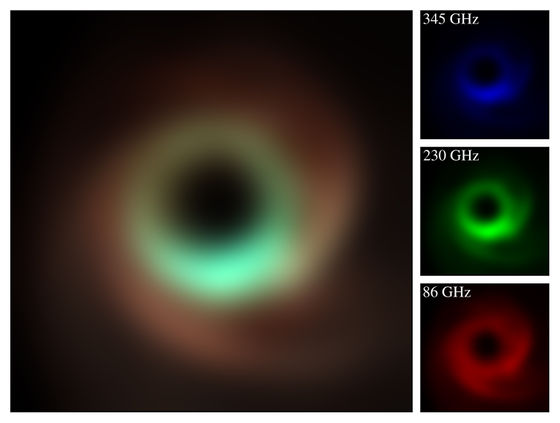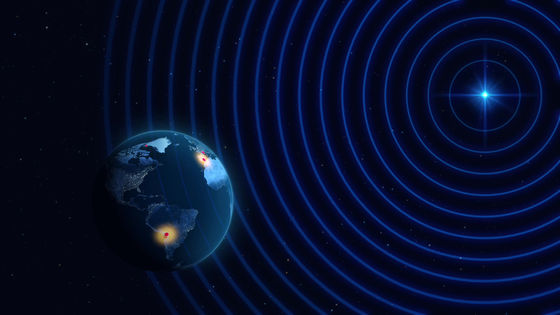Event Horizon Telescope releases clearer color image of 'black hole'

The Event Horizon Telescope (EHT) team has successfully captured the first-ever image of a black hole, and has previously captured images of black holes such as
First Very Long Baseline Interferometry Detections at 870 μm - IOPscience
https://iopscience.iop.org/article/10.3847/1538-3881/ad5bdb
EHT scientists make highest-resolution observations yet from the surface of Earth | ESO
https://www.eso.org/public/news/eso2411/
Event Horizon Telescope Makes Highest-Resolution Black Hole Detections from Earth | Center for Astrophysics | Harvard & Smithsonian
https://www.cfa.harvard.edu/news/event-horizon-telescope-makes-highest-resolution-black-hole-detections-earth
In a paper published in the academic journal The Astronomical Journal on August 27, 2024, the EHT team reported on test observations using Very Long Baseline Interferometry (VLBI) using light with a frequency of 345 GHz.
According to the research team, by combining the new frequency data with the previous frequency data, not only can the resolution be improved by 50%, but it can also produce multi-color images of the area just outside the black hole.
Below are simulated images of the massive black hole in M87 (M87*) observed with light at frequencies of 86 GHz (red), 230 GHz (green), and 345 GHz (blue). This is the first time that VLBI techniques have been used at a frequency of 345 GHz, which corresponds to a wavelength of 0.87 mm.

'If you think of the explosion of detail that occurs when you go from black-and-white to color photography, you understand how groundbreaking this advance is,' said Shepard S. Doleman, an astrophysicist at the Harvard-Smithsonian Center for Astrophysics (CfA) and the Smithsonian Astrophysical Observatory (SAO) and co-author of the paper. 'This new 'color vision' will enable us to distinguish between the hot gases and magnetic fields that feed the black hole and eject powerful jets, and the effects of gravity that Einstein advocated.'
The previously released images of M87* and Sagittarius A* were made possible by integrating vast amounts of observational data obtained from radio telescopes around the world into a virtual giant radio telescope the size of the Earth.

Still, the outline of the black hole in the image is blurry, and further improvement in accuracy would require larger radio telescopes or observations at higher frequencies.
It's not easy to make our hypothetical radio telescope any larger, so the only option left is to increase the frequency, but the 0.87mm wavelength is more easily absorbed by water vapour in the atmosphere than the 1.3mm wavelength, and is weakened before reaching the Earth's surface.
This time, the EHT team overcame this challenge by increasing the sensitivity of the radio telescope, developing technology to compensate for the effects of water vapor in the atmosphere, and patiently waiting for good weather.
The new observations achieved a resolution equivalent to observing a bottle cap on the surface of the Moon from Earth, meaning we can now see smaller, fainter and more distant supermassive black holes than ever before.

With this technology, in the future, it will be possible to see movies that reproduce the event horizon surrounding a black hole with even higher fidelity.
'The EHT's successful observations at 345 GHz are an important scientific milestone,' said Lisa Curie, Director of CfA and SAO. 'By pushing the limits of resolution, we are achieving unprecedented clarity in imaging a black hole and setting a new and higher standard for ground-based astrophysics research.'
Related Posts:
in Science, , Posted by log1l_ks







